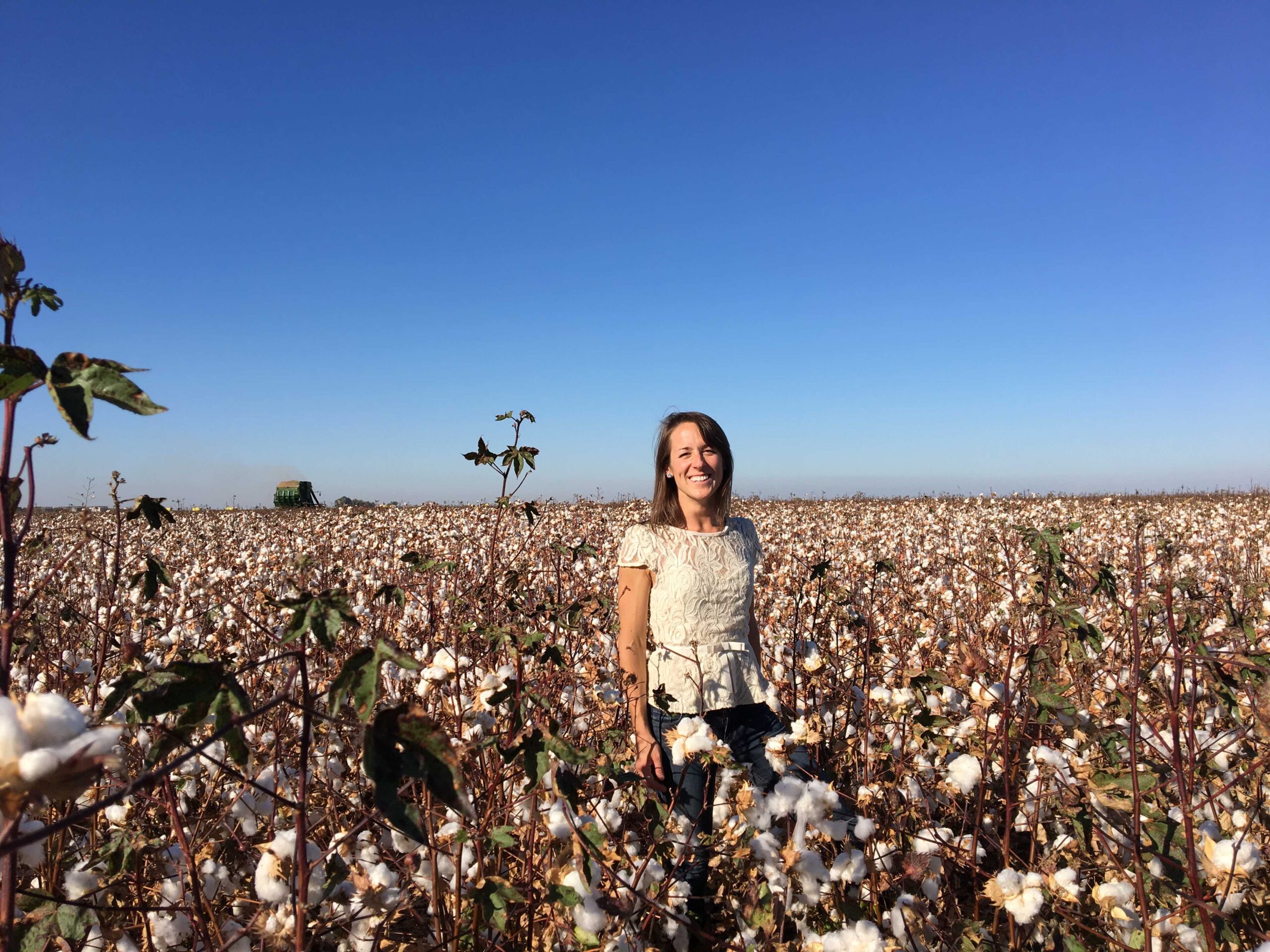Good chats with Levi’s Liza Schillo who oversees climate change and sustainable materials strategies for the global denim brand.
Why did you take this job at Levi’s?
I’d been working for non-profits and also in government and came to the realisation that if I wanted to have meaningful impact, it needed to be in corporate sustainability. It enables you a speed and decisiveness that I think we need these days in terms of change.
What does your role involve?
I oversee our climate change strategy as well as our sustainable raw materials strategy. Broader than that, it’s our sustainable product strategy. You could think of it as two separate worlds, but there’s quite a lot of intersection. I work with our product developers on selecting materials that are better for the environment and for social wellbeing as well. And then also on our carbon footprint, which is mostly an energy footprint. And most of that is within our supply chain. So a lot of supplier engagement, too.
Levi’s has led the way with waterless denim and also produced recycled collections. Is Levi’s actually recycling jeans?
We’re working really hard on kind of cracking that nut and partnering with innovative start-ups. Right now the raw material input is cotton is just cotton t-shirts from what I understand. The goal is to get to fully recycled garments. So it’s really exciting. We’re definitely pushing for more and more of that and focusing our product strategy on the concept of circular where you’re using recycled inputs and then recycling those products at the end of life, too. So one day, I hope we get to the point where you can take a pair of Levi’s jeans and if it doesn’t have any, any better use in it, then you can turn that into a new Levi’s product. That’s the dream.

That is a dream because one of my questions was, ‘how in your view, can we solve the clothing mountain crisis’?
It’s an overproduction issue to be honest. The apparel industry has got more garments in circulation than people can use. And so landfills are piling up, and the industry is flooding markets and the developing world. We’ve reached a point I think where we’ve got to be more thoughtful about it. At Levi’s we’ve been very focused on making clothes that last. I think that’s a real point of pride for us that our jeans can last and be passed down generations. But in addition to that, now we’re adding this concept of the, you know, what does the next generation of that product look like and how can we continue to reuse it?
Levi’s is engaging with the consumer so that they repair old clothing instead of just disposing of it so that they reuse their clothing. Maybe you turn your jeans into a pair of shorts or your jacket into a vest. They’re encouraging a more creative and thoughtful way of thinking about your clothing. Somewhere along the way fashion redefined itself as being ephemeral. That’s got to shift and I think we have the ability to do that. We certainly have a responsibility.

Levi’s is part of the UN Fashion Industry Charter for Climate Change. How is it playing in that playing in that space?
Levi’s was one of the first retail signatories. I’m really focused on the work stream, and engaging fabric manufacturers on energy usage because that is our single largest source of our global carbon footprint. So we’re really working on kind of engagement with that stakeholder group.
We’ve built up a partnership with the International Finance Corporation (IFC) who’s also participating in the UN Fashion Industry Charter for Climate Change. Making use of our corporate leadership and their expertise and working with suppliers directly on auditing and making recommendations on the best things that they could do. You know, very clear and actionable steps they can take to reduce their energy and their water footprints. The water recycling process as a part of these recommendations. We’re seeing great results from the suppliers who have implemented this programme.
This is a new conversation for many of them. And so just opening that door for conversation of, ‘you know, have you thought about doing it a little bit differently?’ ‘This will save you so much energy, which saves you money, this will save you water.’ Just having those conversations has huge results.
Where are your manufacturers spread throughout the world?
We’re pretty spread out as an apparel company. We operate in a number of countries around Asia including India, China, Bangladesh, also Mexico. I’d say 30 countries all together.
That’s quite a spread. Would Levi’s put any investment into these manufacturers in terms of helping them get up to spec?
You could think of it as seed funding. When we come in with this programme, we pay for a portion of the auditor who conducts the analysis of a specific facility. Each project is focused on that one facility because they’ve all got their different challenges and every region has its own environmental challenges. We help pay for that report and then the IFC will, for qualifying suppliers, provide access supplier access to low interest financing. So if they want to take on a more capital intensive project, they have direct access to low interest funds. So it’s an awesome way for them to really get a leg up on tackling this work.
What about controlling water usage and also effluent?
Levi’s has a very strict set of standards that require any supplier who does business with us to implement, and that includes water effluent requirements. They have to meet a certain level of water quality from the water that’s exiting their factories just to do business with us. And we audit facilities. That also includes chemicals that they use within the facility. Even if they don’t go into the waterways, there are certain chemicals that we don’t even want present in the facility to begin with for worker health reasons.
How can consumers make a difference?
This greater demand for transparency in the products that consumers are buying is really opening doors to all of apparel to really do that due diligence and look into, you know, going beyond just direct suppliers to their suppliers and their suppliers. Because the apparel supply chain is so complicated – I mean we can have five, six, seven tiers to get all the way back to the farm where the cotton’s coming from – from there to the end product. So it’s a challenge and a lot of brands I think are struggling with that challenge and figuring out exactly who and what their supply chain network looks like. But the more visibility we get, the better we can be. So I would say that the consumer plays a huge role in that. Just that continuing demand for transparency.
Would it be fair to say waterless denim now a pillar of the Levi’s brand?
Yes. More than 75 per cent of our products now qualify for our waterless programme. It’s becoming our standard way for doing things.
Levi’s led the way with waterless denim and the Repreve range using PET recycled bottles. What other innovations are Levi’s working on.
We’ve talked a little about the recycled fibre. That’s probably what I’m the most excited about. I think there’s huge opportunity there. It’s something that I would like to see continue to grow. The circular economy has two spheres. You’ve got the techno sphere, which is where you’re recycling old product or old fibres, but you also have the biosphere, which is your raw material inputs coming from a natural source.
So the cotton that we use or whatever it is, how can we think of that as a, a self-sustaining replenishing system? And there’s a concept of regenerative agriculture practices. I really want to see more innovation from our partners in that space so that we know when we’re buying virgin cotton, it is coming from a farm that is essentially functioning as a full and complete part of the natural ecosystem. It’s replenishing that watershed. It is using chemicals that are not harmful and having a positive impact on the native species in the area. I just think there’s so much opportunity there.








